Chandigarh, India (2006, 2014)
I have welcomed very greatly one experiment in India: Chandigarh. Many people argue about it; some like it, some dislike it. It is the biggest example in India of experimental architecture. It hits you on the head and makes you think. You may squirm at the impact but it has made you think and imbibe new ideas, and the one thing which India requires in many fields is being hit on the head so that it may think. I do not like every building in Chandigarh. I like some of them very much. I like the general conception of the township very much but, above all, I like the creative approach, not being tied down to what has been done by our forefathers, but thinking in new terms, of light and air and ground and water and human beings. [- Jawaharlal Nehru. Speech, 17 Mar 1959]
Chandigarh may well be India's greatest achievement in urban town planning. But despite Nehru's enthusiasm, and the evident success of the experiment, Indians seem to have learned nothing from it. Chandigarh ought to have become the harbinger for more planned cities. What came instead was unplanned urban sprawl, dispiriting shanties, and creaking infrastructure, punctuated now by gated enclaves built for the rich by a land-grabbing mafia of private developers. That Chandigarh didn't inspire a hundred planned cities points to a colossal failure of the Indian imagination.
Plans for building the city began soon after Punjab was split into two in 1947. Pakistan was ceded the larger western part, including the Punjabi capital of Lahore, leaving the Indian Punjab without an administrative, commercial, or cultural capital. It was hoped that a grand new capital would become a symbol of modernity, heal the wounded pride of Indian Punjabis, and house thousands of Hindu and Sikh refugees from Pakistan. Swiss-born architect Le Corbusier was commissioned to lead the city planning, aided by Indian architects and town planners. Construction began in the early 1950s, and much of the city was completed in the early 1960s.
Scenically located at the foot of the Himalayas, Chandigarh boasts a modern infrastructure, open spaces, greenery, cleanliness, and a relatively low population density. Divided into 46 rectangular sectors, numbered 1-12 and 14-47 (13 was deemed unlucky), most sectors have an area of nearly 250 acres and a housing capacity of about 15,000 people. Designed to be self-contained in civic amenities, the sectors are separated from each other by broad streets for the city's fast-moving arterial traffic. In the northeast is the artificial Lake Sukhna, a major recreational spot of the city. [Text in preceding two paragraphs adapted from Encyclopedia Britannica.]
Chandigarh is also an ancient Harappan site. In 1969, while digging for a shopping center in sector 17, a Harappan cemetery was unearthed. Remains include painted pottery (jars, dishes, goblets, vases, bowls, cups, beakers), terracotta figurines, beads, toy-cart frames, wheels, faience and copper bangles, stone querns, pestle and sling balls, etc. This, along with their Gandhara, Mughal, and Pahari art collections, makes Chandigarh's museums among of the best in India.
A wonderfully whimsical creation is Nek Chand's rock garden, made from building and industrial refuse. I'd seen it as a teen in 1983 but nothing quite prepared me for its expanded scale and the audacity of its creations when I went back in Sept 2006. I stayed in a hotel in sector 17, probably upon the still buried remains of an ancient Harappan settlement, part of a civilization best known to us for its urban town planning. [—Namit Arora, 2006; Comment?]
 |
A tranquil spot inside  |
Advertising a magic show  |
Chandigarh City Museum  |
|
City Center Shopping, Sector 17 |
Chandigarh street |
||
|
Taj Hotel  |
Rock garden visitor |
||
Sukhna Lake (more) |
An artificial lake (more) |
Fed by rainwater |
|
|
Rock Garden: A Fantasy Created by Nek Chand ▒ |
|||
Inaugurated in 1976 |
Made from scrap and other waste |
Bottles, glass, bangles, tiles, ceramic |
|
 |
(more) |
||
The rock garden pictures above were taken in Oct 2014, the ones below in Oct 2006. |
|||
Entrance gate  |
Nek Chand's former abode  |
Rock art  |
Waterfall  |
 |
 |
 |
 |
Pool (waterfall)  |
Swings (more)  |
Hall  |
Wall art  |
 |
|||
(more) |
|||
|
The Government Museum and Art Gallery |
|||
Designed by Le Corbusier  |
First hall  |
Phulkari textile art ▒ |
Sculpted
panels
 |
Head of Tirathankara |
Bust of Mahavira |
Yakshi |
Salabhanjika |
Darpana-Dharini |
Head of a Lady |
Standing
Bodhisattva  |
|
Five scenes from the life |
a. Buddha's visit to Indrasala cave |
b. Buddha with devotees |
c. Mara and associates come to |
d. Taming of elephant Nalagiri |
e. Buddha in company of Amrapali |
Scenes from Siddhartha's Life |
Dipankara Jataka |
Maitreya |
The Buddha |
The Buddha |
Army of Mara |
The worshippers |
Maitreya |
Head of the Buddha |
 |
Seated
Buddha 4th cent. CE,  |
Amitabha
preaching in
Sukhavati heaven 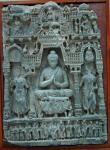 |
Padmavati |
Railing
pillars 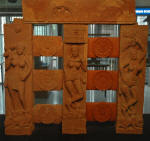 |
Ganga |
Parvati, Pala School |
Uma Maheshwara |
Lady churning mild |
Palm leaf manuscript |
A family on the move |
Hill women |
Ten Gurus |
Raja and Rani in dalliance |
Todi Ragini |
Todi Ragini |
Hunger Wood, SL Prasher  |
|
Harappan Site Density ▒ 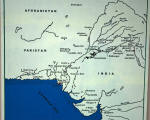 |
Ancient civilizations timeline  |
Harappan pots  |
Harappan seals 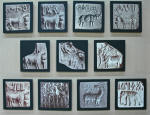 |
|
Harappan figurines 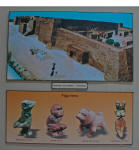 |
Harappan misc. objects 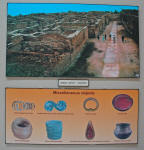 |
Harappan misc. objects 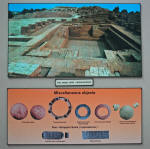 |
Harappan pottery (more) 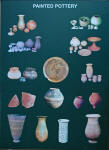 |
|
Harappan script  |
Lothal dockyard (1, 2) |
Male head
(replica; more)
Stone,  |
Male bust
(replica)
Stone,  |
|
Chandigarh Natural History Museum |
|||
Designed by Le Corbusier  |
 |
 |
Dinosaur gallery (habitat)  |
Designed in collaboration with Vitalect, Inc. All rights reserved. |













































































